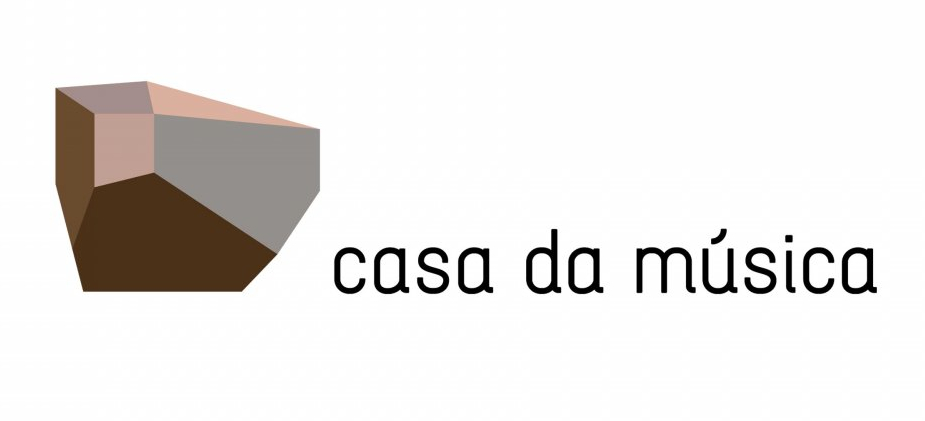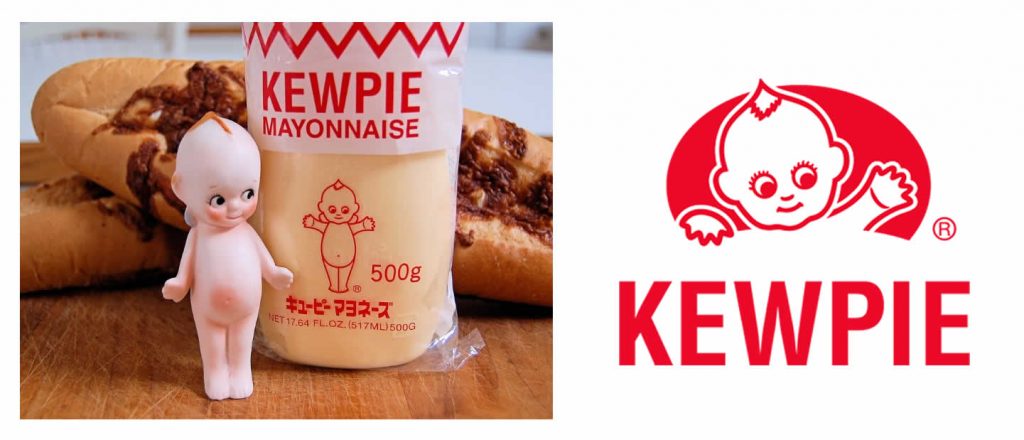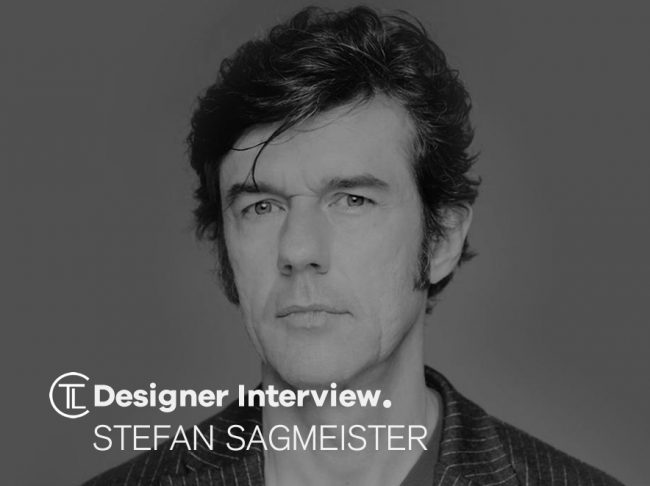
Today a Designer Interview With Stefan Sagmeister who is a designer and art director from Austria. He is currently residing and working in New York City where he co-founded a design firm called Sagmeister & Walsh Inc. with Jessica Walsh. He has produced work such as branding, graphics, and packaging for clients as diverse as for The Rolling Stones, The Talking Heads, Lou Reed, David Byrne, Jay Z, Aerosmith, Time Warner and The Guggenheim Museum, among many others.
Designer Interview With Stefan Sagmeister @sagmeisterwalsh #designerinterview #logodesign #branding #designthinking #graphicdesignhttps://t.co/bRdwzuuxGg pic.twitter.com/Ey6ktWOnZJ
— The Logo Creative™ (@thelogocreative) January 10, 2018
Exhibitions of Stefan’s work have been mounted in New York, Philadelphia, Tokyo, Osaka, Seoul, Paris, Lausanne, Zurich, Vienna, Prague, Cologne and Berlin. He is the author of a few books including the design monograph “Made You Look” which was published in Booth-Clibborn editions. “Things I have learned in my life so far”, “Another Book about Promotion and Sales Material”, “The Happy Film Pitch Book”, and the beautiful “Oubey Mindkiss”

He teaches in the graduate department at the School of Visual Arts in New York and has been appointed as the Frank Stanton Chair at the Cooper Union School of Art, New York.
He co-directed the documentary “The Happy Film,” which premiered at Tribeca Film Festival.
Sagmeister received a Grammy Award in 2005 in the Best Boxed or Special Limited Edition Package category for art directing Once in a Lifetime box set by Talking Heads. He received a second Grammy Award for his design for the David Byrne and Brian Eno album Everything That Happens Will Happen Today in the Grammy Award for Best Recording Package category on January 31, 2010.
In 2005, Sagmeister won the National Design Award for Communications from the Cooper-Hewitt National Design Museum. In 2013 Sagmeister was awarded the Golden Medal of Honor of the Republic of Austria.
Some of his clients are: AIGA Detroit; Anni Kuan Design; Booth Clibborn Editions; Business Leaders for Sensible Priorities; Capitol Records; Chaumont; copy Magazine; Dai Nippon Printing Company; and The Guggenheim Museum.
The Logo Creative – Hi Stefan it’s great to have you take part in our designer interview. I know our readers will get real value and insights from your answers.
Stefan Sagmeister – Thank you for your kind mail and for thinking of me. I would love to answer anything, no problem.
The Logo Creative – What was the turning point in your life when you decided to become a designer and how did you proceed?
Stefan Sagmeister – I started writing for a small magazine called Alphorn when I was 15, and quickly discovered that I loved doing the layout more than the writing.
The Logo Creative – What does your day consist of?
Stefan Sagmeister – For me, 15 minutes of running in the morning has had a bigger positive impact on my well being during the following day than 30 minutes of meditation has had. When I told this to a bunch of neuroscientists at columbia they stated very matter of fact that most authoritative research would back me up on this.
That is the only thing consistent. Other than that, i try to do the difficult things first (concepts) and the easy things last (email etc).
The Logo Creative – What was the first logo you ever designed?
Stefan Sagmeister – Likely the logo for the ronacher, featured on a series of posters. This was a campaign commissioned by hans gratzer to save one of vienna’s major theaters from demolition. I was a student at the university for applied arts in vienna then, and it ultimately had imapact, the ronacher was saved and is now one of the most prominent theaters in vienna.

The Logo Creative – What is your favourite logo you have designed?
Stefan Sagmeister – Likely the casa da musica identity for this fantastic music center in portugal.

The Logo Creative – What is your favourite logo of all time?
Stefan Sagmeister – This will change pending on my mood, today I would say the winged baby on The japanese kewpie mayo packaging.

The Logo Creative – Can you describe or give us an overview of your logo design process?
Stefan Sagmeister – Of course there is a central process in graphics. This process is Different every time. After many meetings with all stakeholders, we will try to limit the overall brand attributes to a maximum of three key attributes. In the case of casa da musica, the central idea was first voiced by the Client who in our many talks before we started designing, referred to the Building as a dice, whatever side in fall on a different kind of music will Come out. This led to the notion that we are treating the building itself as The largest, 3-d version of the logo, and all other logos are a version of That, mutating depending on the music played. Everything followed that Central conceit.
The Logo Creative – In your opinion regarding logo design pricing do you prefer working on a Fixed rate or customer budget and can you explain why?
Stefan Sagmeister – We never design just a logo, but only take on jobs where we are Responsible for the entire identity, often including websites, signage, Brochures etc., sometimes including hundreds of items. The pricing depends On the complexity of the project.
The Logo Creative – How long does it take to complete the average logo design project from Start to finish?
Stefan Sagmeister – As we only design complete identities, they take between 6-24 months.
The Logo Creative – Are you a mac or pc user and is there a reason for your choice?
Stefan Sagmeister – Mac, its the industry standard.
The Logo Creative – Which software do you use frequently?
Stefan Sagmeister – The adobe creative suite is the basic software, augmented by various 3-d Software and custom programmed tools.
The Logo Creative – What is your favourite style of logo design? And why?
Stefan Sagmeister – We have long thought that sameness in branding is overrated. There are situations where a static logo makes sense, especially when used as a quality Mark, but there are many other instances where a more varied approach turns Out to be superior. But: flexible identities need:
- a client that utilizes many, many brand applications and an attentive Audience that will be able to see a wide variety of these applications on a Regular basis.
- thinking designers also at the level of implementation. Its important good People are involved on all levels.
The Logo Creative – What is your daily inspiration when you design?
Stefan Sagmeister – One of my most frequent sources of inspiration is a newly occupied hotel Room. I find it easy to work in a place far away from the studio, where Thoughts about the implementation of an idea don’t come to mind immediately But I can dream a bit more freely.
The Logo Creative – In your opinion what’s the best and worst part of your job been a Designer?
Stefan Sagmeister – Many designers I respect create non-client driven experiments as a regular Part of their practice. The key word here is ‘regular’. I found that Experiments which are not part of a regular schedule, have a tendency to get pushed out by more ‘urgent’ jobs simply on account of having a deadline Attached to them. The worst part is working with badly organized people, may They be other designers, clients or suppliers, when things need to done Again and again.
The Logo Creative – Who is the most inspiring person to you and why?
Stefan Sagmeister – My sister Christine, because she is kind.
The Logo Creative – Who is your favourite graphic designer and why?
Stefan Sagmeister – Tibor kalman, because he had the most guts of any designer I know and understood that spending energy on making sure that a design appears as designed is as important as designing it. Makoto saito for selling the same photo shoot to different clients. Rick Valincenti for continuously doing ground breaking work. Paula Scher forDesigning the best project of her career (the type for the new jersey Performing art center), after a 30 year career, last year.
The Logo Creative – What’s your favorite design quote?
Stefan Sagmeister – I can only re-quote Donald Judd: design has to work, art does not.
The Logo Creative – In less than 10 words what is graphic design?
Stefan Sagmeister – A combination of words and images with the goal to communicate.
The Logo Creative – What steps did you take to start your graphic design business? Did you have to make any sacrifices on your journey?
Stefan Sagmeister – We always tried to keep the studio small. It worked out well.
The Logo Creative – Do you have any regrets? Is there anything you would have changed early On in your career?
Stefan Sagmeister – We should have taken on that zadie smith book cover we declined. It turned into one of my favorite books.
The Logo Creative – If you could go back in time, what would you tell your younger self?
Stefan Sagmeister – Figure out a system that reduces stress early on.
The Logo Creative – What’s the most important piece of advice you have received as a designer That’s helped you?
Stefan Sagmeister – My mentor tibor kalman’s line when I started was: the most difficult Thing when running a design studio is to figure out how not to grow. Everything else is easy.
The Logo Creative – What would be your advice for new logo and graphic designers?
Stefan Sagmeister – Look for a design company that does the kind of work you want to do. Try Really hard to get a job with them. Work your ass off. Then start your own Place. It’s a great job.
I wanted to ask Stefan about the Happy film he directed and starred in. I wanted to know what drove him to create the film and the challenges he faced when making it.
Austrian graphic designer Stefan Sagmeister is doing well. He lives in New York, the city of his dreams, and he has success in his work, designing album covers for the Rolling Stones, Jay-Z and the Talking Heads. But in the back of his mind he suspects there must be something more. He decides to turn himself into a design project. Can he redesign his personality to become a better person? Is it possible to train his mind to get happier? He pursues 3 controlled experiments of meditation, therapy, and drugs, grading himself along the way. But real life creeps in and confounds the process: art, sex, love, and death prove impossible to disentangle. His unique designs and painfully personal experiences mark a journey that travels closer to himself than ever intended.
Video Player00:0000:00
The Logo Creative – What was the driving force behind the happy film, what sparked you to Make the film?
Stefan Sagmeister – I was always interested in how design touches me emotionally, and Eventually, put a talk together titled “design and happiness” (which had Slowly evolved out of another presentation called “can design touch Someone’s heart?”). We’ve received a lot of excited feedback about that Talk. During the second sabbatical in Indonesia, when I looked for something Meaningful to do with my time, that same subject came up again.
The Logo Creative – Is the film about your quest to increase your own happiness?
Stefan Sagmeister – During our second sabbatical in Indonesia I was looking for something Meaningful to design, and the happy film seemed to fit the bill: it forced me into doing a whole lot of research and experiments within this field. I Also figured that whatever we do might have a chance to be of possible Service to other people. It also allowed me to work in a challenging media, As I had never done a film before. Most things I do every day are somehow Geared towards this goal, often just not in a very direct way. And it seemed More challenging to attempt to get a handle on the subject in the film rather Than print, trying out a new medium prevents me to become too complacent.
When we started out, it was supposed to be a general film on happiness. As This quickly proofed impossible as the subject was just too large, it became A film on my own happiness (as I’m an expert on it). This then required that It would be personal, and it slowly evolved into a film about me. This Certainly was not the plan when we started out.
The Logo Creative – Was the film mentally challenging for you to complete, were any of the experiments particularly difficult?
Stefan Sagmeister – To work without limitations proofed extremely difficult. I had written a Script in the very beginning of the project, and we threw that out almost Immediately, as we thought an open-ended approach would make a more Interesting film. So we wound up with no deadline, no pre-conceived ending, and no clear Structure. When we normally start a new design project, either the client or We ourselves create our own set of limitations, borders we have to adhere to Throughout the project. Every novel has to work within its own set of rules, So does every movie and every pop-song. If you can do absolutely anything, You might wind up with nothing. I knew this before we started and ignored it Anyway. Much difficulty arose.
Another video featuring Stefan that is mentioned above you will find interesting is from February 2004 at TED2004 where he takes the audience on a whimsical journey through moments of his life that made him happy — and notes how many of these moments have to do with good design.
learn more about Stefan Sagmeister | The Happy Film| Sagmeister & Walsh | Instagram










